
Inspiring Germany
Slow travel by train: 9 gorgeous rail routes
There are many compelling reasons for a holiday by train: travel in climate-friendly and comfortable style, all while enjoying breathtaking landscapes—completely stress-free!
A train journey has many advantages and is more entertaining: you can sit together with family or friends in your compartment and chat, play games, eat and drink. And what's more, you can sit back and savour the moment, as the scenery unfolds outside your window. Also important, travelling by train is a very environmentally-friendly way to discover a country. We have curated some exceptionally beautiful rail routes for you.
Renowned for its beauty: the Moselle route from Koblenz to Trier
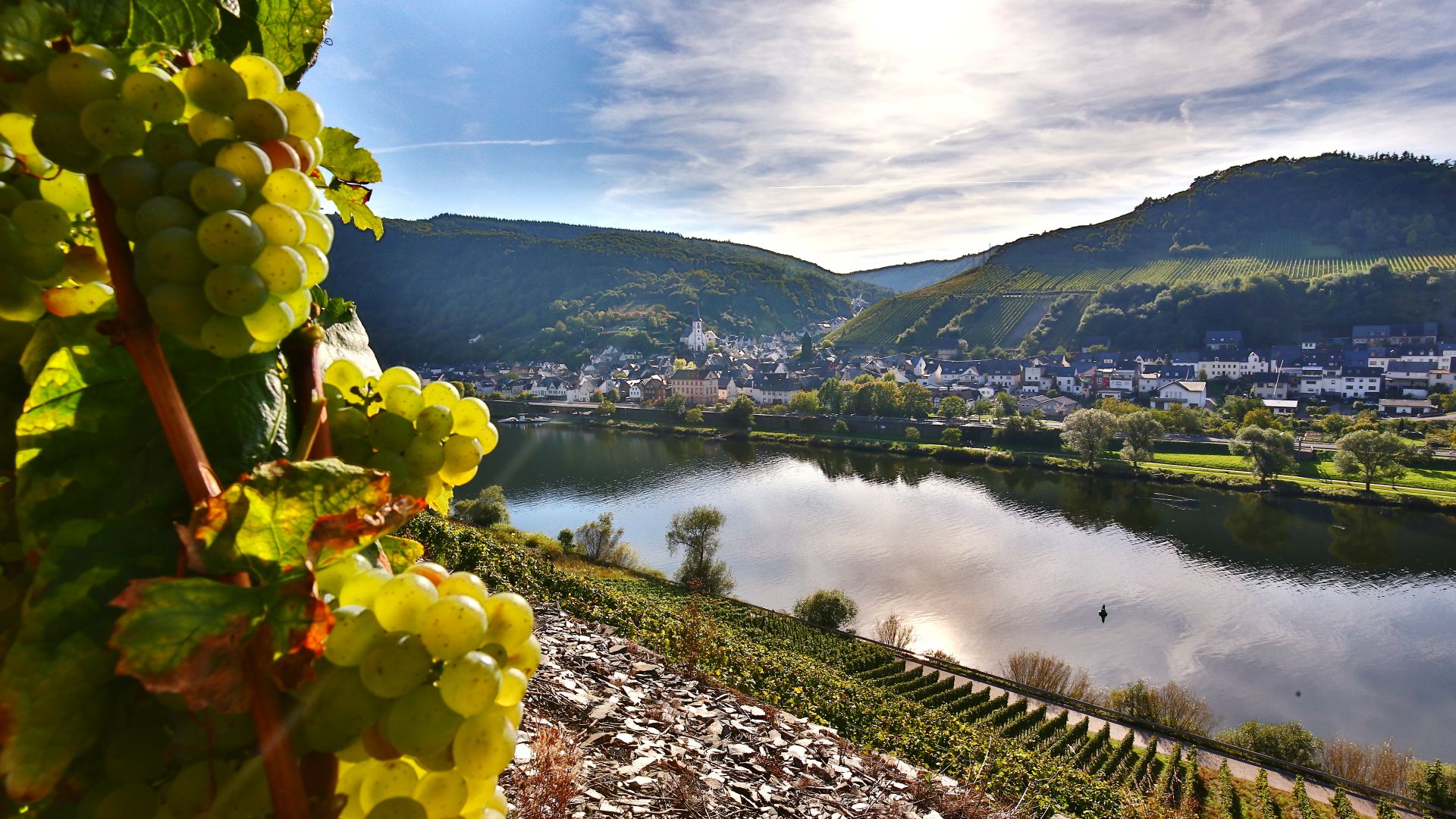 Briedel: Riesling grapes in the vineyards of the Moselle valley
©iStock (Mark22)
Briedel: Riesling grapes in the vineyards of the Moselle valley
©iStock (Mark22)
You can expect magnificent views of the Rhine's second-longest tributary: as the tracks wind through a beautiful landscape from the Moselle's confluence with the Rhine near Koblenz all the way to Trier , the train tracks curve gracefully through a stunning landscape. The train travels breathtakingly close to the steep mountain slopes right alongside the track. On this journey you can enjoy a spectacular panorama of stunning views and also pass through the Kaiser Wilhelm Tunnel: an impressive structure which, at 4,250 metres, was the longest railway tunnel in Germany before the Landrücken tunnel in Osthessen opened. Another attraction is the double-decker bridge near Bullay before you crossing the Moselle loop, where the river takes a 180-degree turn: a sightseeing tour by train!
Experience one of Germany's UNESCO World Heritage Sites by train
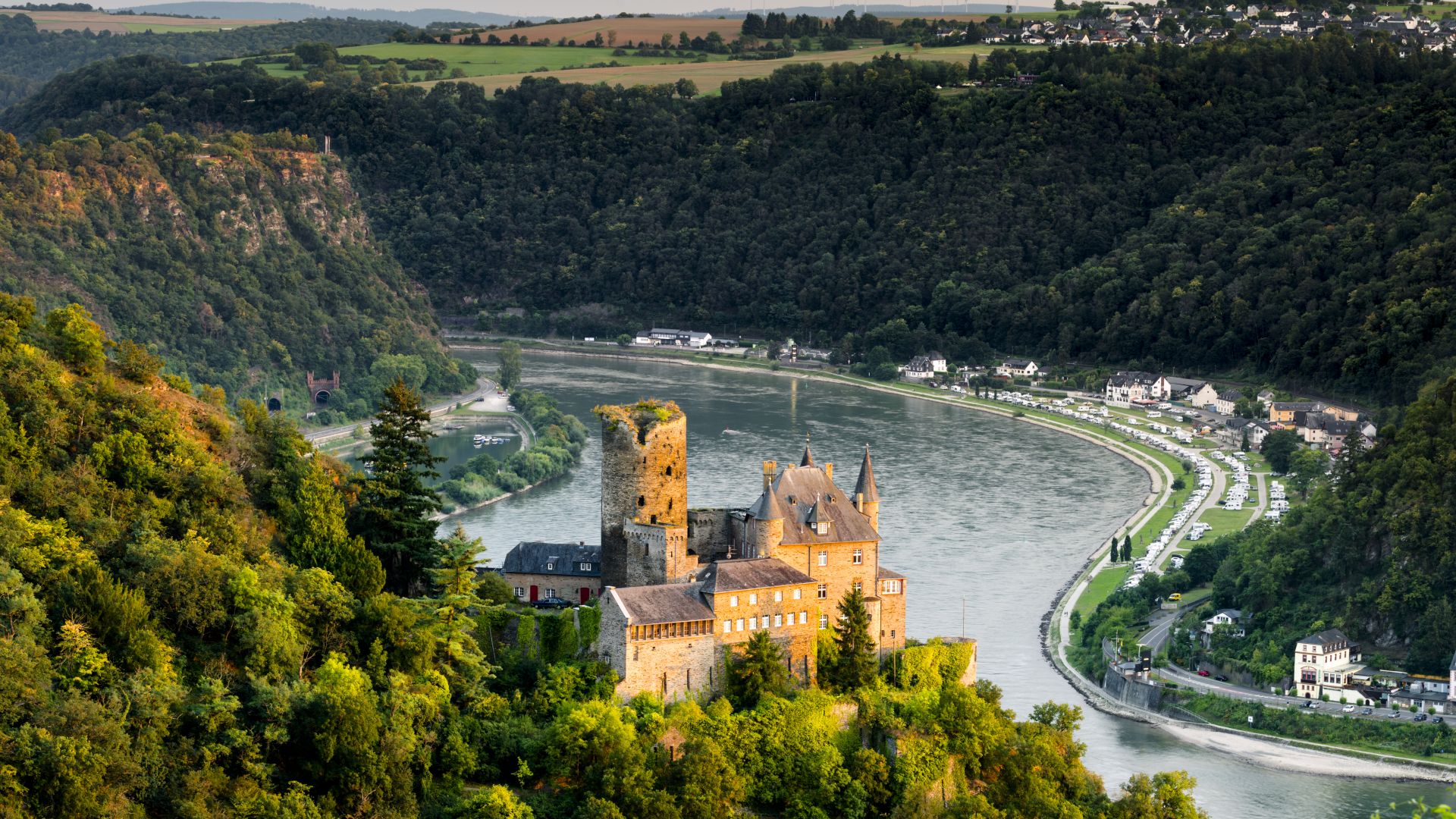 Sankt Goarshausen: Katz Castle on the Rhine in the Upper Middle Rhine Valley
©DZT (Francesco Carovillano)
Sankt Goarshausen: Katz Castle on the Rhine in the Upper Middle Rhine Valley
©DZT (Francesco Carovillano)
On the journey from Bingen to Koblenz, you won't be able to take your eyes off the view: after all, the journey leads you through the UNESCO World Heritage Site "Upper Middle Rhine Valley" and the landscape through your window is like something out of a fairy tale. Over a distance of 70 kilometres, this railway route winds its way past steep vineyards, impressive rock formations, romantic Old Towns and imposing castles on both sides of the Rhine. You'll also catch sight of the Lorelei, the famous symbol of the Rhine, from the train. Even though this train journey itself is gorgeous, it's also worth disembarking every so often to discover the towns along the way.
A delight for sea lovers and water enthusiasts: from Hamburg to Sylt by train
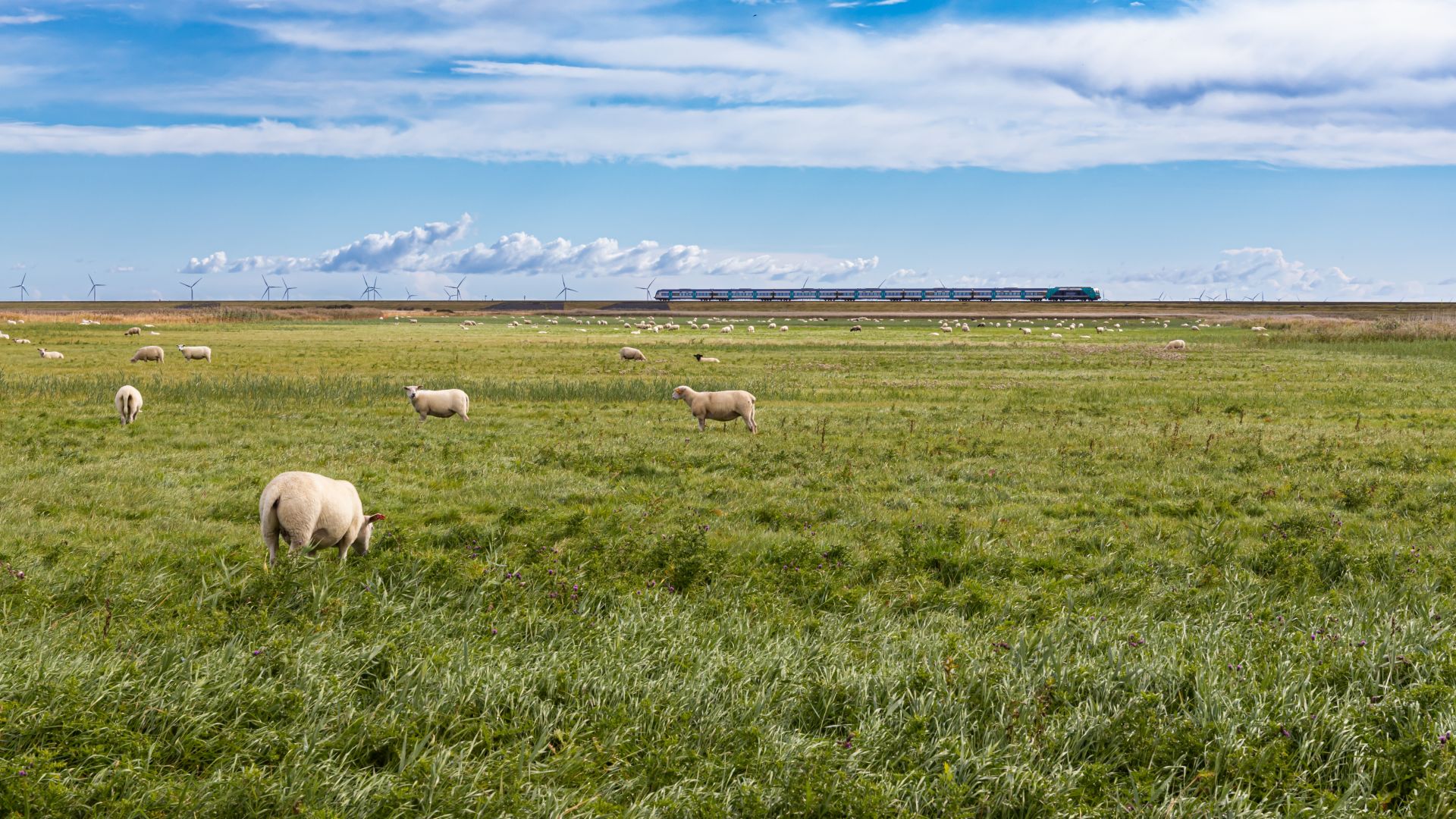 Morsum: Sheep on a marshy meadow and a train on the Hindenburgdamm in the background
©Adobe Stock (thosti57)
Morsum: Sheep on a marshy meadow and a train on the Hindenburgdamm in the background
©Adobe Stock (thosti57)
From the bright lights of the city directly to the sea: it takes less than two hours to get from Hamburg to the coastal town of Husum, and from there on to Sylt . This unique train journey never ceases to amaze: soon after leaving the station in Hamburg, the route leads through the quintessential North German marshland landscapes and, shortly after, crosses the North-Ostsee Canal on the Hochdonn High Bridge, at a height of 42 metres! On a clear day, you can gaze all the way to the port facilities of Brunsbüttel on the North Sea. After the stop in Husum, we headed towards the island: the highlight of this leg of the journey is definitely the eleven-kilometre long Hindenburg Dam, which runs through the Wadden Sea National Park and connects the North Frisian mainland with Sylt.
From Offenburg to Singen on Lake Constance with the Black Forest Railway
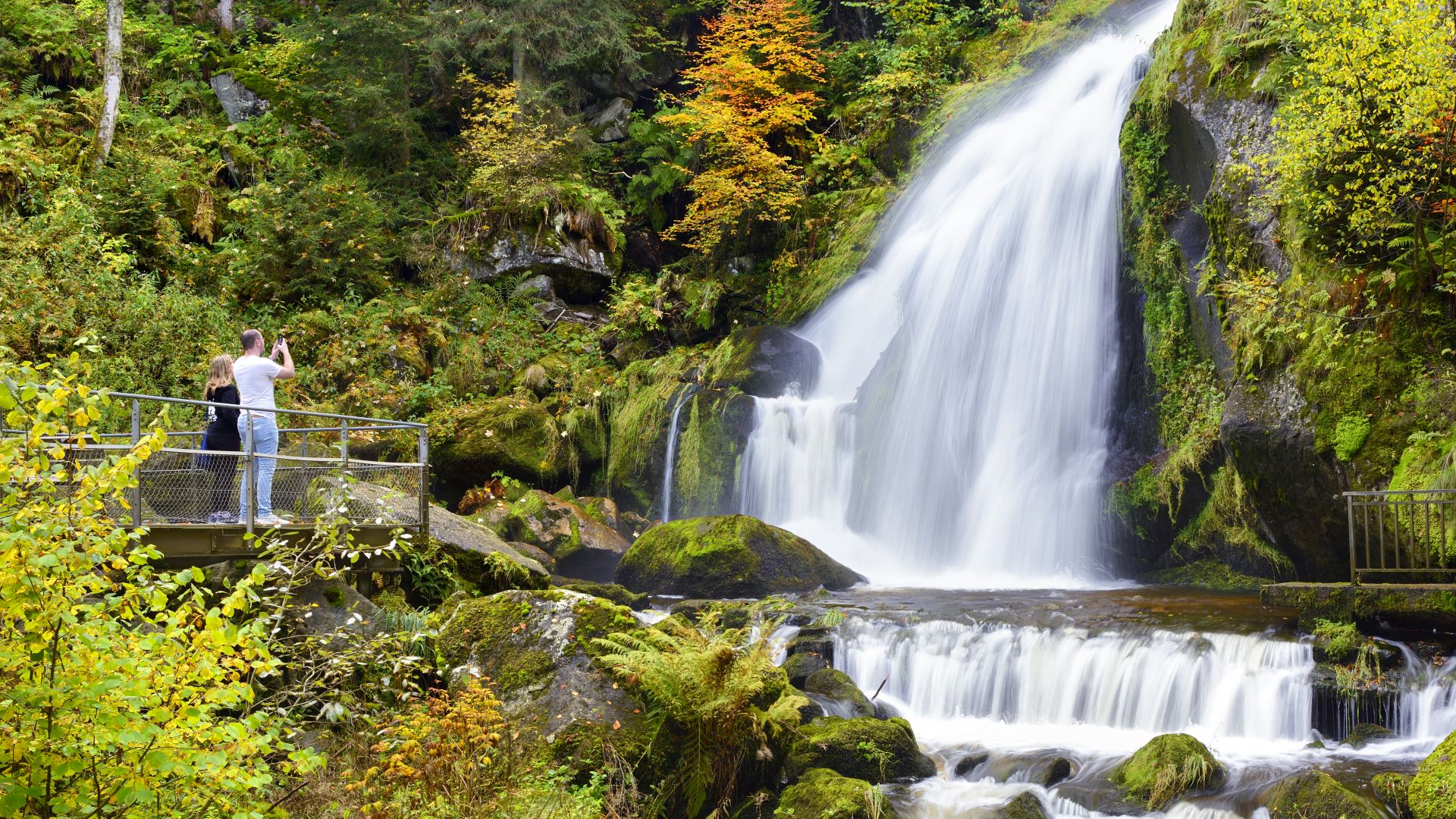 Triberg: Germany's highest waterfalls
©DZT (Francesco Carovillano)
Triberg: Germany's highest waterfalls
©DZT (Francesco Carovillano)
Sit back and marvel: on this route from Offenburg in Baden to the Swabian Sea – as Lake Constance is also known – you travel 150 kilometres through the dense pine forests, deep valleys and impressive mountain scenery of the Black Forest. During this journey, the train glides over the Hornberg Viaduct and travels through two exciting double loops that span several kilometres near Triberg. The train constantly changes direction, making little forward progress but rapidly gaining altitude. Take the opportunity to visit the impressive waterfalls in Triberg or the source of the Danube in Donaueschingen, the source and starting point of this unique river. If you choose not to make any of these stops, you can also take the Black Forest Railway to the town of Singen near Lake Constance in just under two hours.
Lake Constance Belt: from Radolfzell to Lindau
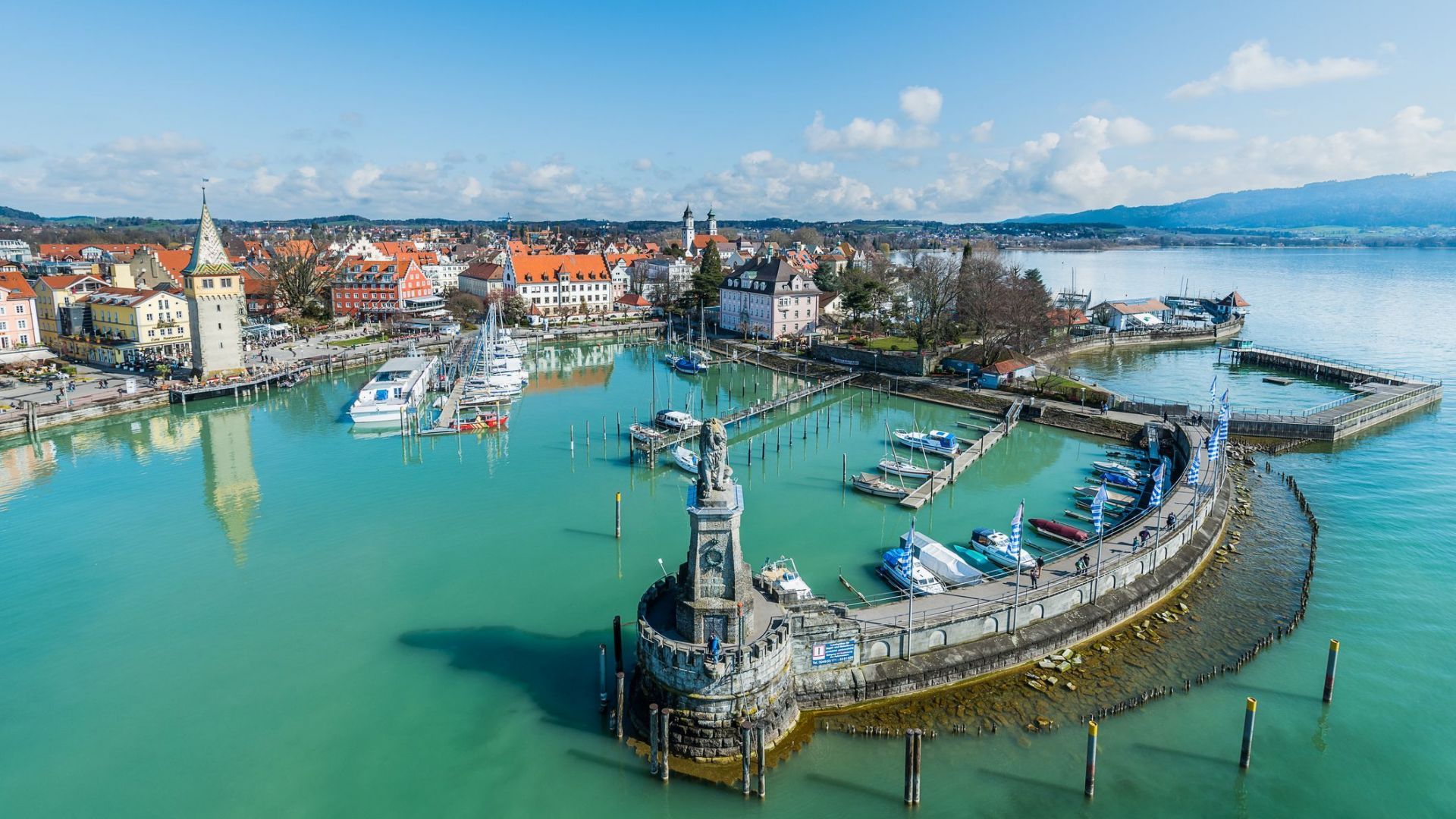 Lindau/Lake Constance: Harbor entrance with the Bavarian Lion statue
©Getty Images (Volker Bauer / EyeEm)
Lindau/Lake Constance: Harbor entrance with the Bavarian Lion statue
©Getty Images (Volker Bauer / EyeEm)
The route covers 74 kilometres and leads from Radolfzell via Friedrichshafen to Lindau along the northern shore of Lake Constance. If you manage to tear your gaze away from the water to watch the countryside go by, you will discover vineyards, meadows filled with flowers, apple orchards, the baroque pilgrimage church of Birnau or Salem Castle. Further in the distance, on a clear day you can even see the snow-covered peaks of the Alps: a truly outstanding backdrop! And when the white sails of the boats on the blue lake glow in the sun, or a Zeppelin glides through the sky, you'd want to travel this route all over again!
Do you dare to take a ride on the Höllentalbahn?
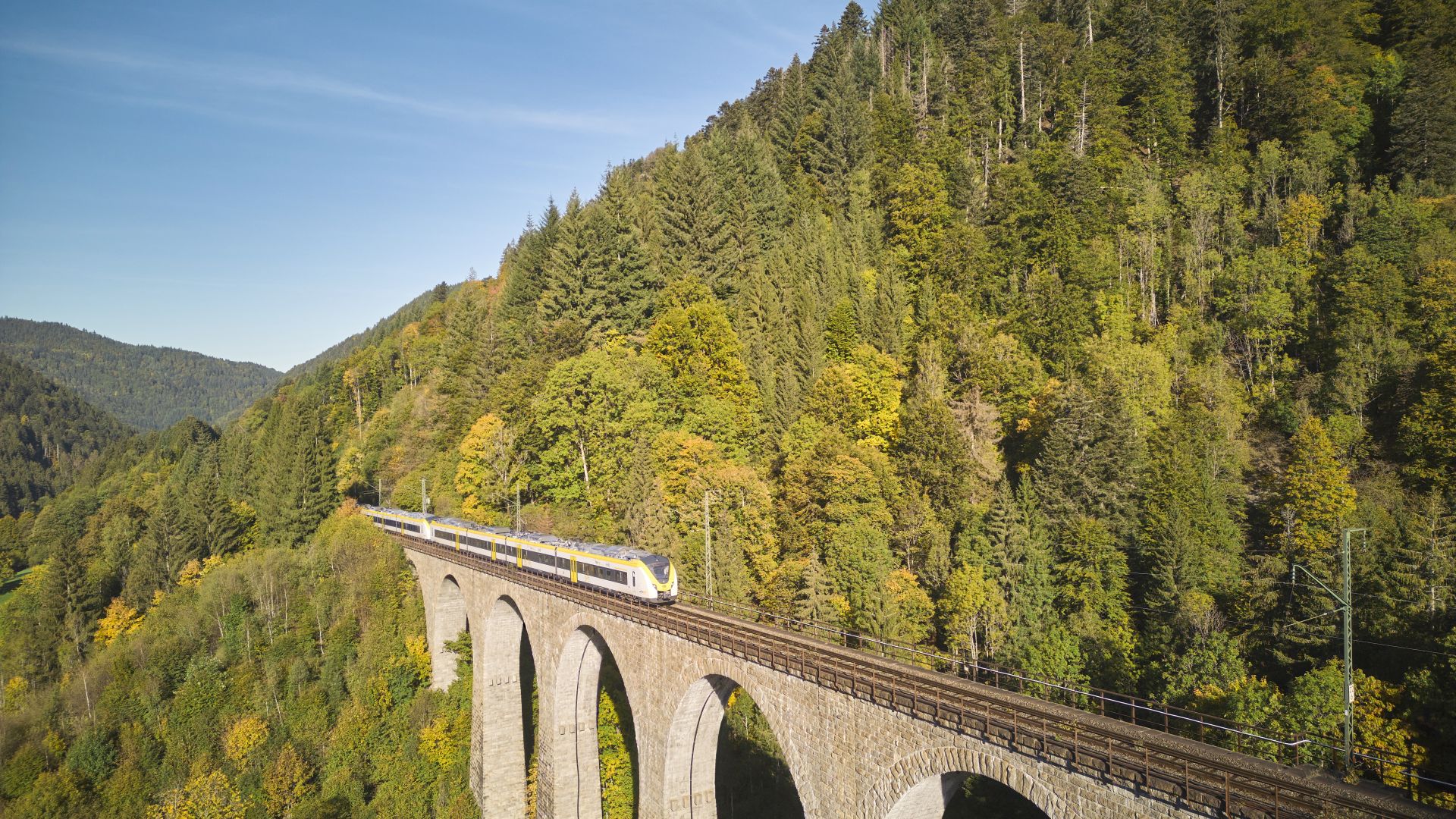 Hinterzarten : Railway crosses the Ravenna bridge in the Höllental valley
©DZT (Jens Wegener)
Hinterzarten : Railway crosses the Ravenna bridge in the Höllental valley
©DZT (Jens Wegener)
This route is definitely a special experience for the whole family: the Höllentalbahn runs between Freiburg im Breisgau and Donaueschingen , and is considered the steepest railway in Germany. On the section between Himmelreich and Hinterzarten, it climbs a total of 400 metres covering twelve kilometres. The remainder of the 76-kilometre journey is equally spectacular. It passes through nine tunnels and over numerous bridges, including the 224-metre-long Ravenna Viaduct, which spans the gorge of the same name. Along the way, you can gaze out at particularly beautiful views of the Black Forest, expansive valleys and Lake Titisee. This route can be a doubly gorgeous experience in the wintertime, when the forests are covered in snow.
Through two national park regions with the Fichtelbergbahn
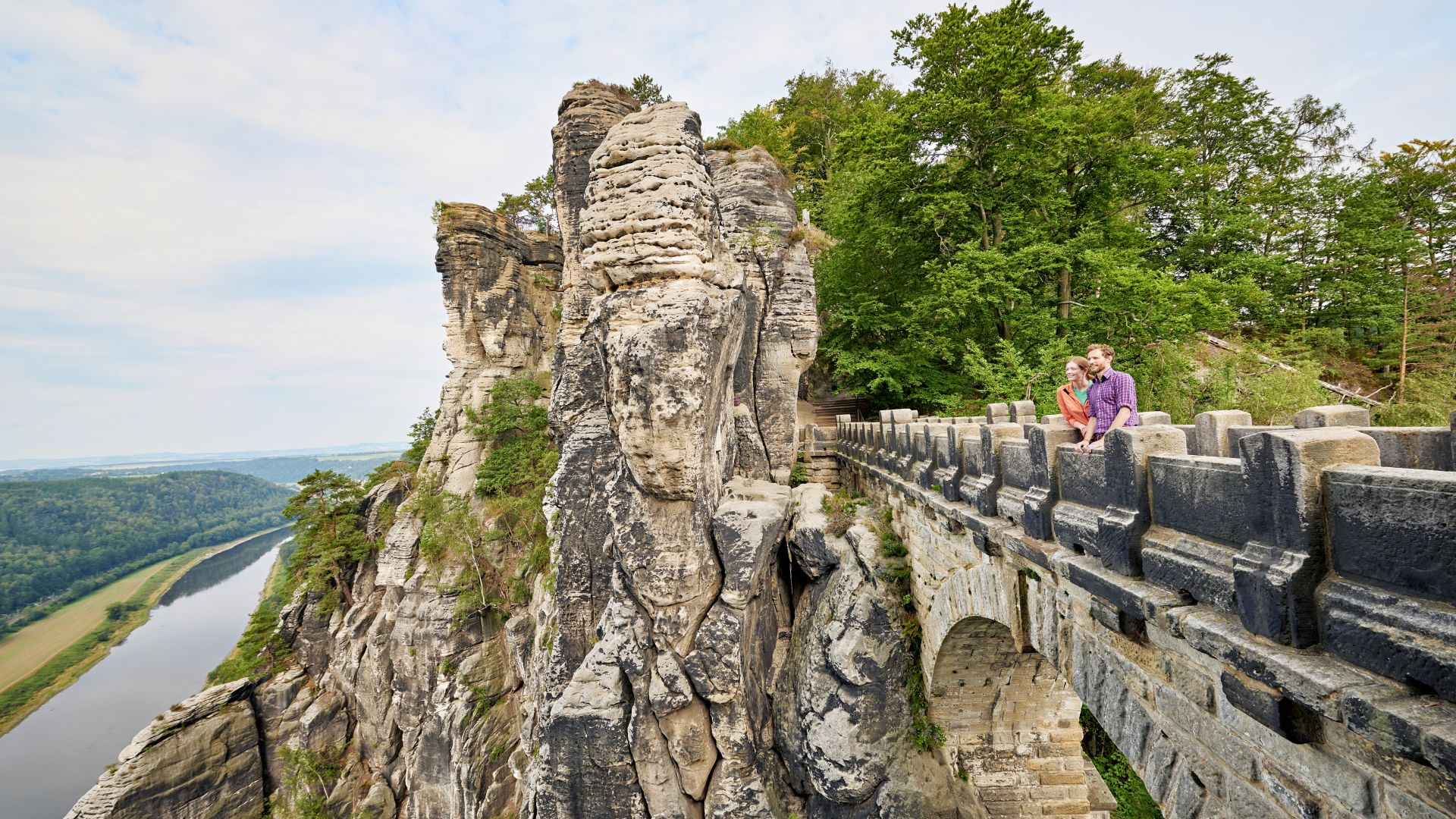 Saxon Switzerland: Hiking in the Elbsanstein Mountains
©DZT (Jens Wegener)
Saxon Switzerland: Hiking in the Elbsanstein Mountains
©DZT (Jens Wegener)
The "official" start of this journey is in Bad Schandau – a state-recognised Kneipp spa and health resort in the Eastern Ore Mountains. If you would like to extend your journey along this panoramic route on the German side, hop on the National Park Railway U28 in Schöna in the Elbe Valley, which connects Saxony and Bohemian Switzerland in the neighbouring Czech Republic. Gazing out of the window constantly rewards the eye, as unique rock formations, dense forests and spectacular valleys rush by. On the German section alone, the railway gains around 200 metres in altitude over a distance of 15.5 kilometres. The route climbs steeply, and the view is famously beautiful! The National Park Railway runs nine times a day in the Saxon Switzerland region, with many stops from which you can start your hikes.
From Stralsund to the "Rasender Roland" Rügen narrow-gauge railway
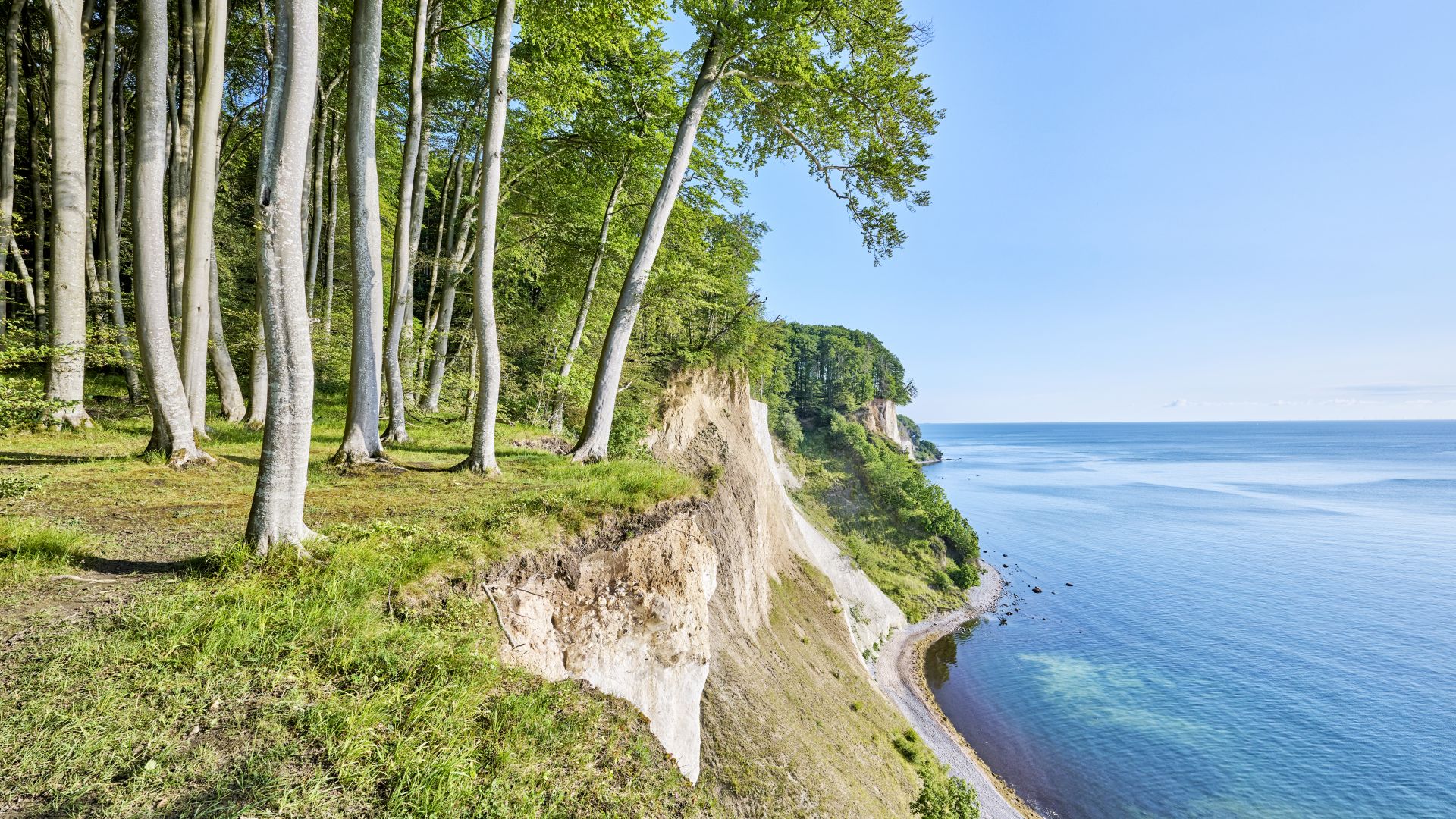 Sassnitz: View of the chalk cliffs from the high shore path
©DZT (Florian Trykowski)
Sassnitz: View of the chalk cliffs from the high shore path
©DZT (Florian Trykowski)
Is it possible to travel to Germany's largest island by train? Yes, it absolutely is. Your journey to the sea begins in the Hanseatic city of Stralsund, where you cross the "Strelasund" estuary via the Rügen Causeway: a scenic journey with a clear view of the boats coming and going, and a panorama of Straslund with its large shipyard. If you stay on the train as far as Sassnitz, you will pass the edge of the Jasmund National Park and see the famous chalk cliffs on Rügen: a highlight not only for nature lovers. To further explore the beautiful island in the Baltic Sea, consider taking a trip on the "Rasender Roland", the narrow-gauge railway with a nostalgic flair that travels along a 24-kilometre route to the island's famous seaside resorts at a steady 30 kilometres per hour. Starting from Putbus, it rattles and steams through gentle hilly landscapes, deciduous forests, and uphill to Jagdschloss Granitz, a popular excursion destination in Mecklenburg-Vorpommern. The Rügensche BäderBahn, as the "Rasende Roland" is officially known, ends in Göhren.
A nostalgic trip through the snowy landscape of the Harz Mountains: the Brocken Railway
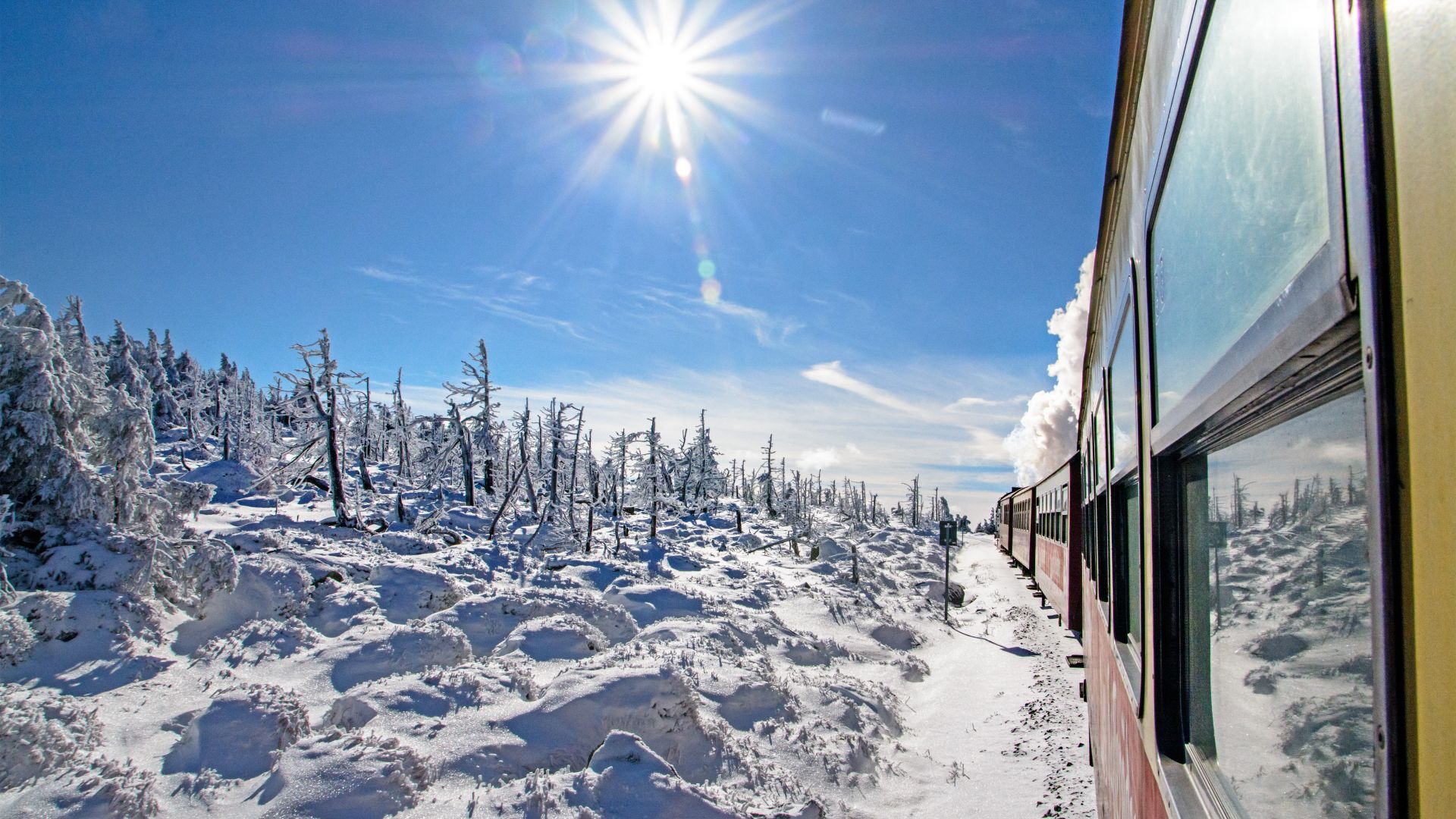 Harz: Harzquerbahn, narrow-gauge railroad with steam locomotive in the snow
©Adobe Stock (peisker)
Harz: Harzquerbahn, narrow-gauge railroad with steam locomotive in the snow
©Adobe Stock (peisker)
Ideally, you can plan to enjoy this train ride through the Upper Harz Mountains in the wintertime, when thick snow covers the fir trees, the landscape sleeps under a white blanket, and the crisp, clear mountain air on the Brocken fills your lungs. With the Brocken Railway , you ascend to the highest peak of the Harz National Park all the while enjoying the impressive panoramic views reaching far into the foothills. The Brocken Railway is a so-called "adhesion railway": this means that it travels to a height of 1,125 metres with around 700 horsepower without gears or similar aids. This makes the Brocken station the highest station of all German narrow-gauge adhesion railways. The starting point of this tour is the station in the village of Drei Annen Hohne, which belongs to Wernigerode in the Saxony-Anhalt district of Harz. From there, you can reach the summit in around 50 minutes on the Brocken Railway.